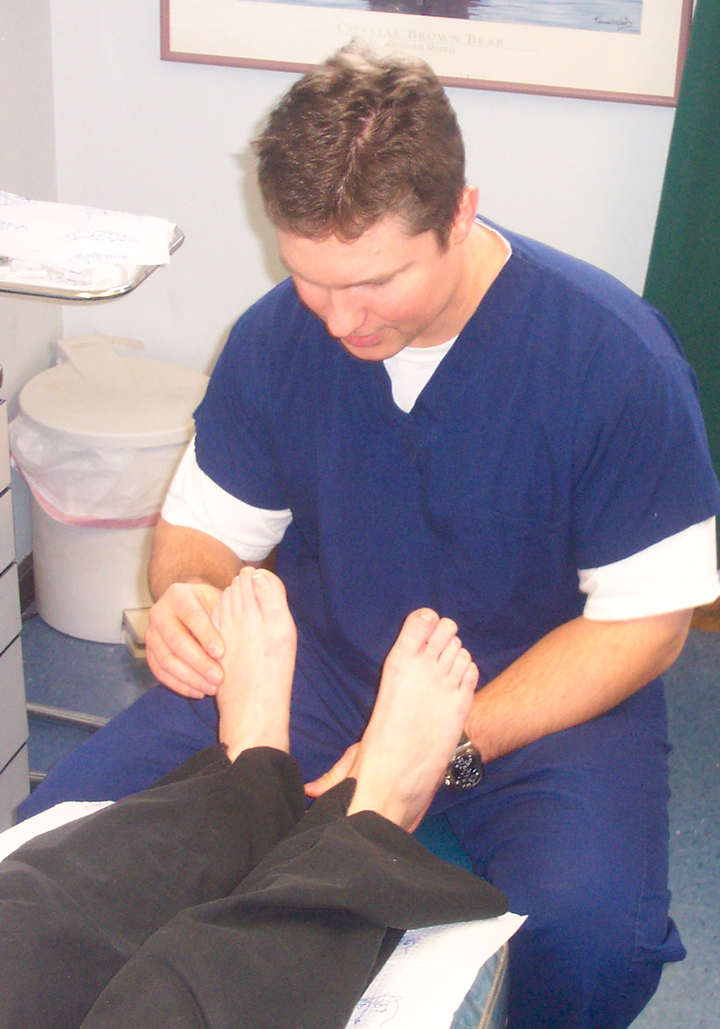
Affiliated Foot Care Center
Call 860•349•8500 or 203•294•4977

Posterior tibial tendonitis is one of the most common problems of the foot and ankle. It occurs when the tendon connecting your foot and calf becomes inflamed or torn. As a result, the tendon may not be able to provide stability and support for the arch of the foot, resulting in flatfoot.
this problem can be treated without surgery, using orthotics and braces if caught early enough. If the problem persists, surgery may be the only alternative to get relief.
Your posterior tibial tendon can be especially prone to tendonitis as it helps you maintain the arch of your foot and prevents excessive flattening (pronation) of your foot while you are walking, standing or running. Posterior tibial tendonitis can be a precursor to posterior tibial tendon dysfunction where there is progressive loss of strength in your tendon and a progressive flattening of your arch.
You may experience pain and swelling along the inside of your ankle and arch along the course of the tendon. You will tend to feel this pain during exercise or extended periods of walking or standing. This will usually get worse as the disease progresses you wil especially notice it along the course of the tendon around the inside of your ankle or along the inside of your arch. You may not feel it when you rest your feet but it may progress to the point where you feel pain almost all of the time. The pain and swelling are signs of an injury to your tendon. The sheath or sleeve that surrounds your tendon will produce excessive amounts of lubricating fluid in an attempt to allow the tendon to glide easier during the healing process. This excessive fluid production results in the swelling the you will see and feel on the inside of your ankle and arch. In advanced cases the injury to the tendon that started as tendonitis may progress to a full or partial tear of your tendon.
Dr. Fosdick may need to use his MRI device to properly diagnose this problem.
Dr. Fosdick can perscribe non-steroidal anti-inflammatory medication, physical therapy, rest and orthotics. In more severe cases, he may need to give you injections of cortisone and immoilize your foot. In the most severe cases, surgery is a good option to make your feet pain free.